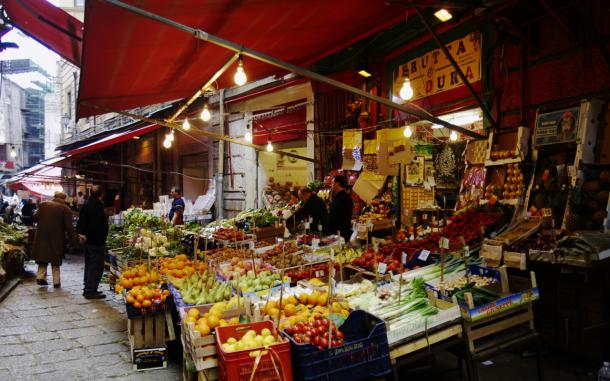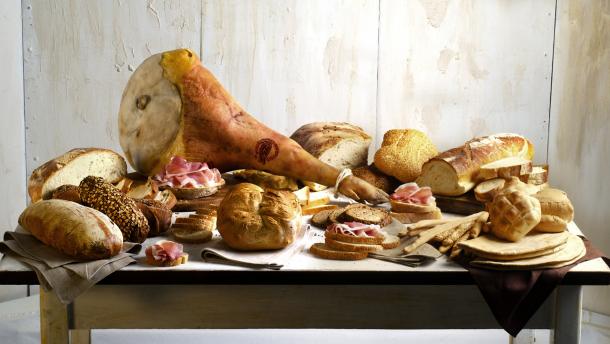The Best Italian Gourmet Food Products
Many Italian food products are the unique result of being finely honed over centuries. Food from the twenty regions of Italy have many distinct differences, but what all of them have in common is an uncompromising commitment to quality. Some specialties are famous internationally. Other foods remain hidden treasures, as the harvest size or short shelf life may preclude exporting.

Over 450 kinds of formaggio (cheese) are made in Italy. Many of these cheeses are popular exports. One third of Italy’s cheese is in the grana family, including Parmigiano Reggiano and Grana Padano. These grainy hard cheeses can be grated, but are usually served in small pieces. Other Italian cheeses from northern Italy include buttery Fontina, Asiago, Taleggio and the luscious blue Gorgonzola.
Further south, sheep milk is used to make pecorino, an aged cheese that is further divided into Romano, Toscano and Sardo. Goat milk is used for making cheese in many parts of Italy as well. This cheese, known as caprino, may be eaten while fresh or brined. Southern Italy produces pasta filata. This cheese family has a distinctive, stringy texture created by kneading cheese curds. Buffalo milk mozzarella is preferred by most, though milk from cows is also used. More varieties include Provolone and Caciocacallo. These require aging and may be smoked as well. Other fresh cheeses include ricotta, made from gently cooked whey, and mascarpone, which is made by culturing full fat cream.
Some of the most eagerly eaten Italian gourmet products include their salumi, meats preserved by salting, drying or smoking. The majority of types of salumi are made from pork, though beef, game and poultry can be preserved as well. The most beloved of these salumi are prosciutto, usually from Parma or Friuli, but other pork specialties, such as prosciutto cotto (cooked ham), lardo or pancetta (the Italian take on bacon), are also popular.
The other category that salumi fall into is made from small pieces of ground or chopped meat, usually enclosed in casings. Italian various type of sausages, but also larger insaccati, such as mortadella or salame, are good examples of these meats.

Condimenti are a class of Italian gourmet products that cover sauces, preserved produce and many kinds of seasonings. Tender mushrooms, vegetables and seafood can be preserved in olive oil, brine or vinegar and canned to use in antipasti or for cooking. Sweet jams and jellies and canned tomato products fall into this category, as do dried spices, fresh pesto and even aceto balsamico, a locally made sweet vinegar aged for over a decade in wood barrels.
One of the more unusual Italian food products found in Italy is mostarda di frutta, a mustard flavored candied fruit often served with bollito misto (a boiled supper with assorted meats) or to flavor winter squash and cheese filled pasta.
Tartufi (truffles) are one of the most expensive Italian gourmet products. The most valuable variety is the Tuber magnatum, or white truffle, found in Piedmont in the autumn or early winter. These rare Italian food specialties are usually available only locally, though a few manage to be exported at exorbitant prices. Italy also exports the more common, but still expensive, black truffle.
If creating a gourmet Italian food list, olive oil can’t be left out. Nearly one third of the olive oil in the world is produced in Italy. Most of this oil comes from central and southern Italy, though a few places in northern Italy grow olives. Extra virgin olive oil, made from the first pressing of the hand picked green olives, is the most flavorful. The climate where the olives grew and methods of extraction give subtle differences to the flavor of the oil. This fruity green oil can be used raw as a condiment or used for cooking Italian sauces, vegetables, seafood, meat or soups.
To most foreigners, merely bringing up the word Italy brings Italian pastas to mind. Most pasta in Italy can be put into three categories, although there are exceptions. The dough for pasta secca is made from coarse durum wheat and water. After shaping, it is dried for storage and exporting. Well known shapes include long spaghetti, medium corta, or tiny pastina.
Pasta fresca, or fresh pasta, is made from soft wheat and raw eggs. Pasta ripiena, or filled pasta use the same dough. This variety includes ravioli and tortellini. After hand shaping, it is packaged for short term storage. Modern technology, including freezing and vacuum packaging, have extended shelf life, making it possible to produce commercially.
Rice is one of the less prominent Italian food products. The shortgrain rice is cultivated to stay firm while simmering for extended periods of time. Arborio is preferred for risotto by many cooks, though Baldo, Carnaroli and Vialone Nano are also used for this classic Italian dish. Italian rice is graded by the grains’ size and cooking time.
Italian bakery treats are rarely exported due to a short shelf life. Gelato is a dense, rich frozen dessert that is often flavored with nut pastes or local fruits. Famous candies from Italy include gianduia, a chocolate flavored with hazelnut paste, an egg white and nut nougat called torrone, and marrons glacés, whole candied chestnuts. Sugar coated almonds known as confetti have become extremely popular for wedding favors.
Baked desserts are more easily shipped abroad. Well known Italian pastry includes panettone, amaretti cookies, savoiardi (ladyfingers) and almond biscuits called cantucci. Less well known packaged cakes include the fruit and nut filled panforte and colomba. Many of these Italian food products are available for sale internationally. Without stepping on to a plane, it is possible to experience many of the Italian gourmet products.
Related news stories:
Outdoor Mercati: How to Shop for Fresh Produce the Italian Way
